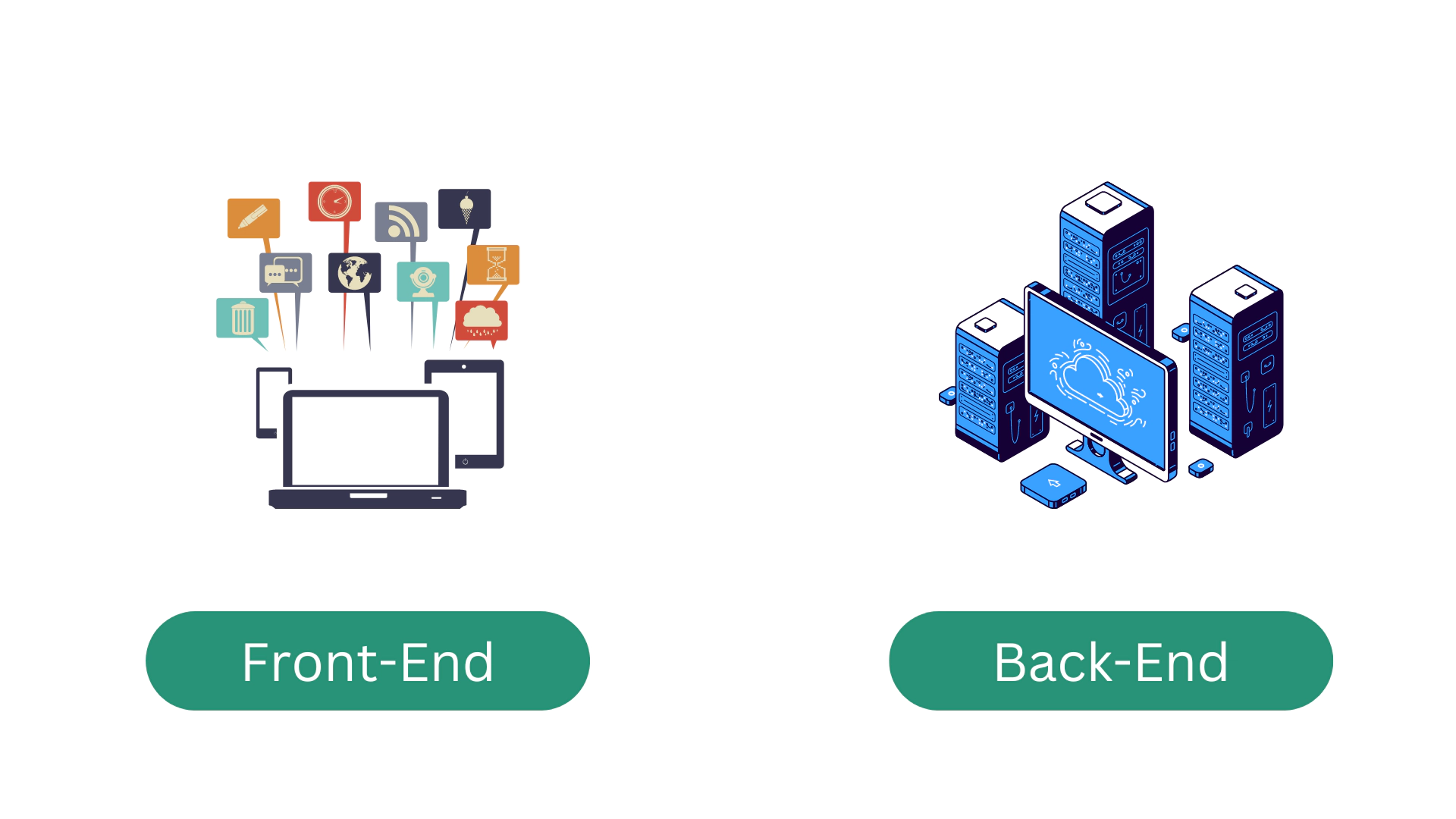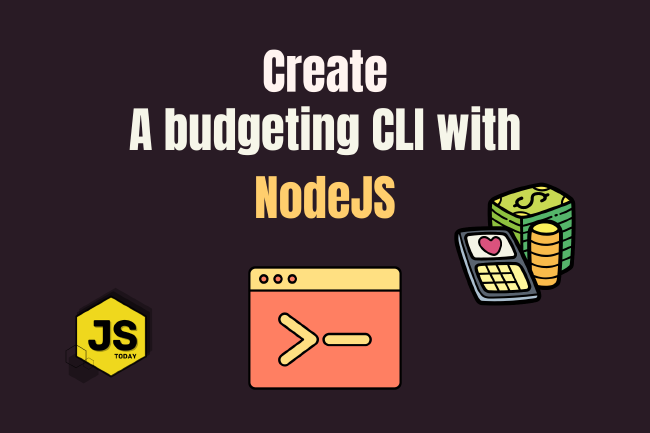Differences Between Front-End and Back-End Development
You might have been reading an article about web development and stumbled upon these two terms: front-end (i.e. “client-side”) & back-end (i.e. “server-side”) development. What does this mean, and how are they different? Before we begin exploring which career path is right for you, let’s examine what front-end and back-end development actually mean.
Front-end development focuses on the visual aspects of a website – the part that users see and interact with (i.e. buttons, search bars, text, etc.). Back-end development is concerned with the system, data, and logic of the site. To get a better idea of this, feel free to explore our article How The Web Works (specifically, the request-response model section).
Let’s explore this more in-depth, and see the differences between front-end and back-end web development.
What is a front-end developer?
As stated above, a front-end developer designs and develops the visual aspects of a website or application. Their tools include HTML, CSS, and JavaScript. When you visit a website, everything you see and interact with was created by a front-end developer.
Technologies used by front-end developers
As mentioned above, front-end developers primarily work with HTML, CSS, and JavaScript. However, the JavaScript ecosystem is massive. There are legacy codebases still using jQuery, and the modern side of technology developing front-end applications with technologies like React, Angular, and Vue.
Although it’s usually the job of a designer, a front-end developer may also use design tools, such as Adobe Photoshop, or GIMP to create graphics for websites.
Career choices for front-end developers
Front-end developers have quite a few options when it comes to career choices, from:
- Web designer: As you might have guessed from the description, a web designer designs websites. However, it’s a pretty broad job. A web designer may or may not actually write code. They could simply design the website using Photoshop and send it off to a developer to write it for them.
- User interface (UI) designer: A UI designer is generally focused on the design of the website. They communicate their ideas to front-end developers.
- User experience (UX) designer: A UX designer also works on the front-end. Generally implementing tests to see how users engage with the site, suggesting improvements to the developer.
- Front-end developer: A front-end developer builds static websites without any database or back-end logic. Something they might build would be a website for a gym or a local restaurant.
Is front-end development difficult?
Anything worth doing well is worth doing poorly at first.
Generally, most beginners will find themselves exploring front-end development, as they might have been told it is easier to learn. We do agree front-end development is a great option for beginners, as changes to the DOM are instant, and you see immediate results.
However, front-end development isn’t really all that easy. There are so many frameworks and libraries available for front-end developers to choose from, the list of tools grows every day, and there are lots of details a front-end developer needs to be aware of: responsive design, accessibility, and more. Don’t let this scare you away. Difficult things aren’t easy, but they are worth it.
What is a back-end developer?
A back-end developer creates and maintains the system of a website or application. This includes server logic, database design and maintenance, APIs (Application Programming Interface), and even the security of the system.
The back-end of a website receives requests from the client (i.e. front-end), and contains the logic to send the requested data back to the user.
Technologies used by back-end developers
Technologies used by back-end developers include PHP, Ruby, Node.js, Java, Python, etc. Backend developers also work with databases, which is information that is set up for access, management, and updating.
Some common databases they may work with include MariaDB, a MySQL database, MongoDB, a NoSQL database, or another variation.
Is back-end development difficult?
As with the word easy being attached to front-end development, most beginners are told that back-end development is much more difficult to start learning over front-end. Really, it depends entirely on you. Learning either is achievable. It’s entirely up to your determination.
Front-end and back-end differences

The front-end is like the exterior of a car – the windows, mirrors, paint, etc. The back-end is like the car’s engine and the processes of the engine, those things that things which you do not see, but are vital in the operation of a vehicle.
If you like being creative and artistic, the front-end might be for you. You will take the designs given to you and, using logic, create a live, functioning site or application.
If you think you’d like solving problems, writing algorithms, creating APIs, managing databases, etc. then back-end development is for you.
Both paths are highly rewarding.
There is a third option, though: full-stack development.
Full-stack development
A full-stack developer is someone who can work in both front-end and back-end development, creating fully functional sites or web applications using all of the technologies mentioned. It has gotten easier to master this area of technology with how far JavaScript has come.
It’s used for both front-end and back-end development, and there are quite a few stacks available to work with, including the MERN (MongoDB, Express, React, and Node) and MEAN (MongoDB, Express, Angular, and Node) stacks.
Conclusion
Web development is a massive and inviting field. Whether you choose to be a front-end or a back-end developer is entirely up to you, but we’re sure you will eventually explore both options, as most developers today will know a bit of everything. It’s totally fine to dedicate all of your time to one of the options, though, becoming an expert in your craft.
We hope you enjoyed this article. Share your thoughts in the comments below.
Frequently asked questions
Q: Is front-end easier than back-end development?
A: While we think it’s best to explore both options, front-end might be easier to start with. As we stated above, you’ll be able to see instant results working in the front-end. Creating an API and then requesting resources from it isn’t a visual thing, so it might be a bit difficult for beginners to get a feel for things.
Q: Is front-end development easy?
A: While it’s easier to get started learning front-end development, it’s definitely not easy. The libraries and frameworks lists grows huge with every passing year.
Q: Is front-end development dying?
A: Absolutely not. There’s still a huge demand for front-end developers. The demand for good front-end developers is even higher.
Related Posts
The Art of Data Visualization: Exploring D3.js
Data is everywhere, flowing into our applications from various sources at an unprecedented rate. However, raw data alone holds little value unless it can be transformed into meaningful insights.
Read moreJavaScript’s Secret Weapon: Supercharge Your Web Apps with Web Workers
During an interview, I was asked how we could make JavaScript multi-threaded. I was stumped, and admitted I didn’t know… JavaScript is a single-threaded language.
Read moreCreating a NodeJS Budgeting Tool
In this article, we’re going to show you how to read and write to a .txt file using NodeJS by creating a small budgeting CLI (Command Line Interface).
Read more


